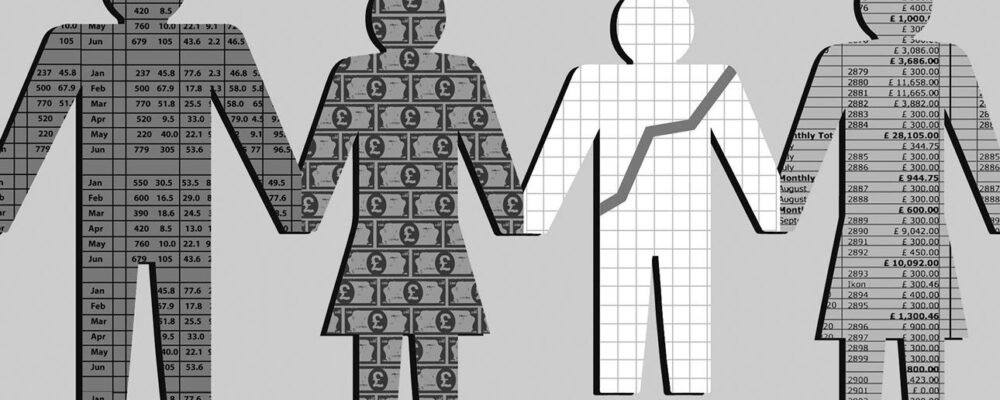Dan Page/theispot.com
Leaders can’t escape the global imperative to reduce the contributions businesses make to environmental degradation, but deep down, many harbor doubts: Can a profit-driven organization also be sustainable? Pressure to grow revenue and control costs is constant. How can a leader feel confident in pursuing more sustainable choices and defending them to boards and shareholders sensitive to the often higher costs of greener approaches?
The dueling pressures to do business sustainably and to maximize profits leave many leaders stuck, unsure what to do. Many falsely categorize sustainability as a compliance issue, taking a wait-and-see approach and aspiring to do the minimum. But they miss new opportunities and are less prepared for the energy transition away from fossil fuels. As with any major disruption, companies that take smart steps forward can carve out an advantage and avoid being left behind.
Get Updates on Transformative Leadership
Evidence-based resources that can help you lead your team more effectively, delivered to your inbox monthly.
Please enter a valid email address
Thank you for signing up
Some CEOs may succeed at rallying stakeholders to support green initiatives based on principles alone. But the practical reality for many leaders is that they must build a business case for sustainability. We believe that focusing on the classic economic levers of the marketplace can give leaders a framework for thinking creatively about how to find a path that does right by both the business and society. We’ll explain how our framework provides three pathways to profitably and sustainably creating new value for society, customers, and companies.
Frame the Sustainability Opportunity in Economic Terms
Our framework can help build a case for sustainability-driven strategic opportunities by using the levers of cost reduction, creating a willingness to pay more, and reaching new customers, illustrated by the traditional price-demand curve. (See “The Classic Profit Maximization Framework.”) Applying this accepted economic logic, one can make the business case for sustainability when choices affecting costs and demand expand the profit rectangle or avoid reducing it. We look at examples of how to do so below.
1. Reduce costs. The conventional wisdom holds that producing more sustainable products and services is inevitably more expensive. While this belief is often justified, there are many opportunities that may require significant upfront investment but have lower operating costs that over the long term actually lead to a cost advantage. For example, in 2019, Ellen, an all-electric ferry connecting the islands of Ærø and Als in southern Denmark, made its maiden voyage. The 21.3 million-euro ($22.9 million) project brought together Danfoss Editron, a Finnish offshoot of a Danish multinational specializing in hybrid and electric drivetrain systems; the Danish Maritime Authority; and Swiss battery manufacturer Leclanché, among other partners.
Capital costs for Ellen were 40% higher than those of the nonsustainable diesel alternative, which produces an estimated 2,520 tons of carbon emissions per year. Yet Ellen’s operating costs are 75% lower, resulting in comparative cost savings within just a few years of adoption. Combined with the increasing cost of carbon in the EU emission trading system, the use case for this sustainable alternative is clear.
The total cost of diesel-powered ferries versus hybrid and electric-powered ferries illustrates both the opportunity and the challenge of sustainability investments. If upfront capital is available, the choice of the electric ferry should be obvious. So why are the large majority of ferries still diesel-based? Capital constraints certainly play a role. Decision-makers with a very short horizon will quickly decide that diesel ferries are the most economical choice, as they have a very high discount rate for which benefits that are generated in later years are discounted to zero. High debt, poor margins, and high fixed costs can trap leaders in such short-term thinking — and unsustainable practices.
Similar use cases can be found in an increasing number of sectors, including the demanding underground mining industry. While capital costs for electric mining equipment are higher than for diesel-powered equipment, the electric equipment has greater horsepower, enabling it to move faster and produce more. The electric machines carry the same load but are smaller, allowing smaller tunnels and thus less digging and waste removal. The mining company also saves on equipment to evacuate heat and fumes, which is a huge problem with diesel-powered equipment several thousands of feet below ground level. This all adds up to lower operating costs for electrical mining equipment.1
Several other avenues exist for reducing operating costs: for example, switching to alternative raw materials (such as using material derived from dandelions instead of rubber to produce tires), investing in greener production technology to avoid a future cost disadvantage resulting from the mandatory purchase of carbon permits, or redesigning products or processes for material or energy efficiency.
How can you find opportunities to reduce costs? One place to start, as hinted above, is to look at the trade-off between short- and long-term costs and make the business case for long-term benefits. While this may be as simple as comparing operating versus capital costs, such as in the case of the ferry, paying attention to scenarios in which traditional operating costs increase or become more volatile can boost the argument for sustainable approaches. You may also want to take the total cost into account, as in the case of the mining equipment, where the operating benefits arise from all the other costs saved.
Look at the trade-off between short-term and long-term costs and to make the business case for the long-term benefits.
If the long-term benefits are too far in the future, look for ways to shorten the time frame. When Caterpillar started developing more sustainable hybrid heavy excavators, its diesel-electric hybrids had a seven-year payoff, which proved too long for most customers. As a half-step, the company developed a hybrid diesel-mechanical excavator, which captured and reused mechanical energy directly rather than converting it into electric energy and back. This more sustainable H class excavator had a shorter payback period because it saved fuel but lacked the component cost of diesel-electric hybrid models. It was so easy for contractors to justify that sales grew to a third of that for all heavy excavators.
A second approach is to rethink the product design and manufacturing to drive out cost. Tesla’s innovations to manage costs in production have famously kept margins high and given it a cost advantage over its rivals. That strategy has also given it the flexibility to cut into margins and use price cuts to stimulate demand.
2. Create willingness to pay. A second possibility for creating value from sustainability is to pursue customer willingness to pay (WTP) more for a sustainable alternative. If you doubt such an approach can work, take a look at the 10 million electric vehicles sold last year, each one at a premium above a comparable gas-powered vehicle.2 This strategy is called for when operating costs rise due to the use of more sustainable materials or practices.
Consider the case of Eastman Chemical’s introduction of Tritan. In 2008, the plastics industry was shaken by a series of stories linking bisphenol A (BPA), a common plastic additive said to mimic the effects of estrogen in the body, to health problems as wide-ranging as behavioral issues, type 2 diabetes, and heart disease. In response, Eastman Chemical introduced the co-polyester plastic Tritan, a BPA-free material that can be molded into consumer plastic products.
The challenge was that Tritan cost more to produce than plastics containing BPA and was sold for 30% to 40% more than traditional plastics. Despite the higher price, however, Eastman reported, “Tritan has been a really great success”3 — so much so that the company launched an even more expensive follow-up: Tritan Renew, BPA-free and made of up to 50% certified recycled material. Notably, this even more expensive but more sustainable product has done remarkably well.4 What allowed Tritan to shine is that both Eastman’s customers, such as plastic container companies Nalge Nunc International and CamelBak, and the end consumer were willing to pay a premium. Eastman cooperated with companies including CamelBak and Nalge Nunc, maker of Nalgene products, to deploy formidable marketing resources toward promoting Tritan and Tritan Renew to consumers, driving demand and WTP. Of note here: In the early years of Tritan, the lack of BPA-free options gave Eastman considerable pricing power; that leverage waned, however, as competitors entered the market.
How can you find the opportunities to create greater willingness to pay? It can help to consider not only the functionality that particular products or services afford to customers but also the intangible emotional or social benefits. How does an offering make a user feel or appear to others? For some consumers, the environmentally superior choice may help them feel virtuous or may be a status symbol. Market research such as social listening can provide insights into consumers’ “jobs to be done” and help you spot opportunities to increase willingness to pay.
For B2B companies, WTP opportunities can be identified by systematically surveying and analyzing the end customer. Eastman has developed such a methodology to identify the segment that responds most to sustainability messaging and has a higher WTP. The company then helps its direct customers develop marketing messages to achieve the differentiation and WTP they seek.
Market research such as social listening can help you spot opportunities to increase willingness to pay.
Sustainability-driven WTP opportunities also may focus only on the direct customer and be independent of considerations further down the supply chain. For example, automotive companies such as Mercedes Benz are willing to pay more for steel that is produced using some degree of green energy sources. Doing so helps them meet regulatory targets for reducing carbon emissions in their supply chains. Similarly, Michelin is able to sell its truck tires to large fleet operators at a premium because they can be safely retreaded several times. This allows the fleet operator to reduce their lifetime costs, as the cost per kilometer of high-quality retreaded tires is 25% to 40% lower than low-cost tires.5 Compared with new tires, retreaded tires also save 70% on natural resource extraction (mainly steel consumption), 29% of land use (for growing rubber trees), 24% of CO2 emissions, and 19% of water consumption.6
3. Reach new customers. Leaders can also maintain profitability, even in the face of higher costs and lack of increased willingness to pay, by increasing demand by reaching new customers. Most leaders are under constant pressure to grow the business, and sustainable offerings often open up opportunities to acquire new customers seeking green alternatives. That requires identifying product or service line extensions where there is potentially new demand for sustainable solutions.
To illustrate, consider how leaders at Bosch Power Tools reached new customers by developing a circular business model. Traditionally, when Bosch received returns or defective products, the company simply disposed of them because its customers had little interest in used products, which they possibly perceived to be of lower quality. But when leaders at Bosch Tools began to explore a more sustainable approach to managing such returns, they realized that there could be a segment of customers who cared about the functionality of the product rather than its newness and might be interested in remanufactured tools. This more sustainable, circular approach of selling affordable remanufactured tools allowed the company to reach new customers who did not typically buy its products, while also creating a defensive bulwark against low-cost, low-quality competitors. Moreover, remanufactured products did not cannibalize the company’s core products, especially when sold through secondary sales channels. Research found that customers who purchased remanufactured products from brands like Bosch ultimately preferred them to no-name, lower-quality imports.7
This approach has been employed by other companies as well. Xerox has long managed to appeal to broader market segments by retaining ownership of its copiers via leasing, refurbishing end-of-lease copiers or copier parts, and then selling or leasing the affordable refurbished copiers to customers who may be more price sensitive.
Leaders may uncover new demand for sustainable offerings by exploring sectors beyond their traditional market.
How does a leader find and justify these new customer opportunities? The easiest source of new customers may be to target adjacent segments, as Bosch and Xerox have done. Rather than trying to increase willingness to pay in your existing market segments, look for customers in your existing markets who may be underserved. These opportunities are often easier to justify, since they are known customer groups (for example, you have a sense of the number of customers and their behaviors). Justifying the move relies on showing that you can serve these customers at a profit.
In other cases, leaders may uncover new demand for sustainable offerings by exploring sectors beyond their traditional market. For example, EcoLab’s subsidiary Nalco Water was once a fairly traditional water management company serving utilities. But leaders observed the explosive growth of cloud computing data centers, which require massive amounts of water to cool, and saw an opportunity to expand to new customers by focusing on their sustainability needs. The company partnered with data center operator Digital Realty to apply Ecolab water management techniques to the server water use problem. Ecolab ultimately helped Digital Realty reduce water use by 30 million gallons, electricity use by 17 megawatts, and CO2 by 12,000 metric tons. This has saved Digital Realty $8 million, and the partnership has a 60% ROI.8 Even better, Ecolab discovered a new, profitable market that will be a major source of future growth.9
There’s nothing inherently new about lowering costs, creating willingness to pay, and reaching new customers — they are the traditional levers of business. But that is their virtue: They provide a well-understood language and logic for persuading skeptical boards and top leaders to pursue a sustainability strategy. To build that case, leaders can look for the opportunities that will help them do well while doing good.
Justifying such strategic moves can remain challenging; resistance to change will continue to exist in most organizations, particularly since these new moves entail uncertainty. One way to overcome these challenges is to base uncertain decisions on future certainties. Reynir Indahl, one of the world’s most successful sustainability investors, leverages this logic to generate high returns when making new sustainability investments.
“We live in a world that is fundamentally uncertain,” he told us. “How do you act as an investor? In an uncertain world, there are some certainties.” His list includes a growing and aging global population that will need more food and better health care, resource depletion that demands better approaches to waste management and recycling, and the need to transition away from fossil fuels as an energy source. While businesses must face these global challenges, they present real opportunities for those that address them.
References
1. Sandvik, “How Electrification Is Changing Mining,” New Scientist, Sept. 22, 2021, www.newscientist.com.
2. J. Ewing, “Electric Vehicles Could Match Gasoline Cars on Price This Year,” The New York Times, Feb. 10, 2023, www.nytimes.com; and L. Runkle, “Is a Tesla Worth It? We Compare All the Numbers to a ‘Normal’ Car,” FinanceBuzz, Feb. 7, 2024, https://financebuzz.com.
3. D. Toto, “Change at the Molecular Level,” Recycling Today, July 31, 2020, www.recyclingtoday.com.
4. “FGX to Scale Up Use of Eastman Tritan Renew on Start-Up of New Methanolysis Plant,” press release, Eastman, Jan. 31, 2023, www.eastman.com.
5. J. Daystar, J. Golden, R. Handfield, et al., “Retread Tires in the U.S. and Canada,” PDF File (Muscatine, Iowa: Bridgestone Bandag, July 2018), www.bandag.com.
6. E. Mugnier, C. Farhanghi, S. Kley, et al., “The Socio-Economic Impact of Truck Tyre Retreading in Europe,” PDF file (Ernst & Young, October 2016), www.etrma.org.
7. V.D.R. Guide Jr., and J. Li, “The Potential of Cannibalization of New Products Sales by Remanufactured Products,” Decision Sciences 41, no. 3 (August 2010): 547-572.
8. P.C. Godfrey and E.R. Tenuta, “Clean: Lessons From Ecolab’s Century of Positive Impact” (Hoboken, New Jersey: John Wiley & Sons, 2023), 4.
9. Ibid., 113.
Reprint #:
“The MIT Sloan Management Review is a research-based magazine and digital platform for business executives published at the MIT Sloan School of Management.”
Please visit the firm link to site






